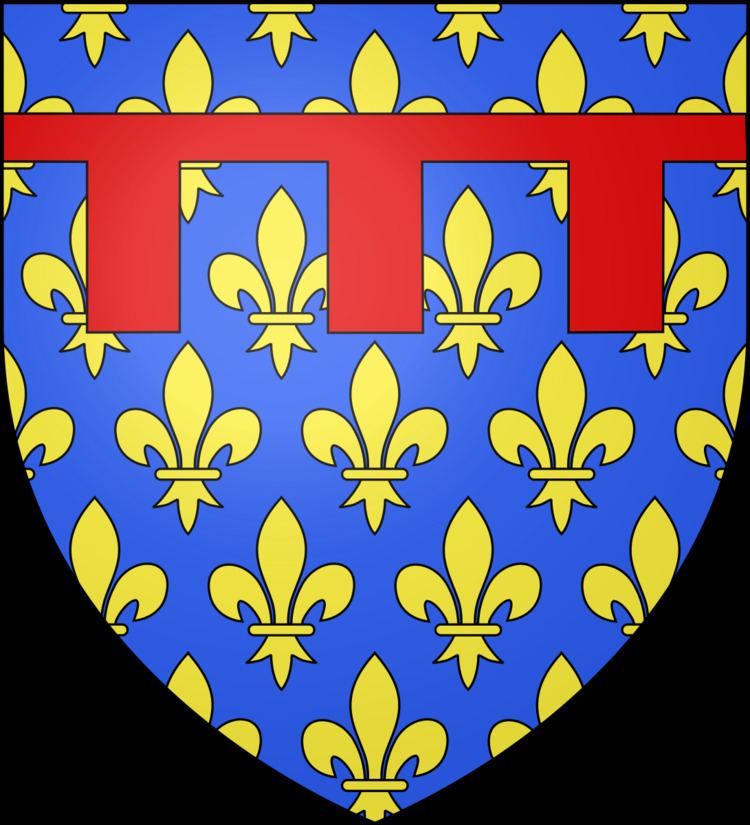Founded 1246 | ||
 | ||
Country France, Kingdom of Sicily, Kingdom of Naples, Lands of the Crown of Saint Stephen, Kingdom of Poland, Latin Empire, Principality of Achaea, Despotate of Epirus, Kingdom of Albania Titles Count of AnjouCount of ProvenceKing of SicilyKing of NaplesKing of HungaryKing of CroatiaKing of PolandEmperor of ConstantinopleDespot of EpirusKing of AlbaniaPrince of Achaea | ||
The Capetian House of Anjou, also known as the House of Anjou-Sicily and House of Anjou-Naples, was a royal house and cadet branch of the direct French House of Capet, part of the Capetian dynasty. It is one of three separate royal houses referred to as Angevin, meaning "from Anjou" in France. Founded by Charles I of Naples, a son of Louis VIII of France, the Capetian king first ruled the Kingdom of Sicily during the 13th century. Later the War of the Sicilian Vespers forced him out of the island of Sicily, leaving him with just the southern half of the Italian Peninsula — the Kingdom of Naples. The house and its various branches would go on to influence much of the history of Southern and Central Europe during the Middle Ages, until becoming defunct in 1435.
Contents
- Rise of Charles I and his sons
- Charles II and division of the inheritance
- Kingdom of Albania
- References
Historically, the House ruled Naples and Sicily, parts of Greece, Hungary (and Croatia), and Poland.
Rise of Charles I and his sons
A younger son of House of Capet king Louis VIII of France the Lion, Charles was first given a noble title by his brother Louis IX of France who succeeded to the French throne in 1226. Charles was named Count of Anjou and Maine; the feudal County of Anjou was a western vassal state of the Kingdom of France, which the Capetians had wrested from the House of Plantagenet only a few decades earlier. Charles married the heiress of the County of Provence named Beatrice of Provence, she was a member of the House of Barcelona; this meant Charles' holdings were growing as Count of Provence. After fighting in the Seventh Crusade, Charles was offered by Pope Clement IV the Kingdom of Sicily — which at the time included not only the island of Sicily but also the southern half of the Italian Peninsula. The reason for Charles being offered the kingdom was because of a conflict between the Papacy and the Holy Roman Empire, the latter of whom were represented by the ruling House of Hohenstaufen.
It was at the Battle of Benevento that the Guelph Capetians gained the Sicilian kingdom from the Ghibelline Swabians, this was cemented after victory at Tagliacozzo. In keeping with the political landscape of the period, Charles is described by scholars as shrewd, energetic and highly ambitious. He signed the Treaty of Viterbo in 1267 with Baldwin II of Courtenay and William II of Villehardouin, the political alliance gave many of the rights of the Latin Empire to Charles and a marriage alliance for his daughter Beatrice of Sicily. The Byzantines had taken back the city of Constantinople in 1261 and this was a plan to take it back from Michael VIII Palaiologos. It also recognised Charles' possession of Corfu and cities in the Balkans such as Durazzo, as well as giving him suzerainty over the Principality of Achaea and sovereignty of the Aegean islands aside from those already held by the Republic of Venice. For a while Charles was preoccupied helping his French brother in the unsuccessful Eighth Crusade on Tunis. After this he once again focused on Constantinople, but his fleet was wrecked in a freak storm off the coast of Trapani. With the elevation of Pope Gregory X, there was a truce between Charles and Michael in the form of the Council of Lyons, as Christians focused on improving ecumenical relations, with hopes of regaining the Kingdom of Jerusalem back from the Muslims.
Charles had fully solidified his rule over Durazzo by 1272, creating a small Kingdom of Albania for himself, out of previously Despotate of Epirus territory; he was well received by local chiefs.
Charles was driven out of Sicily in 1282, but his successors ruled Naples until 1435.
Charles II and division of the inheritance
This House of Anjou included the branches of Anjou-Hungary, which ruled Hungary (1308–1385, 1386–1395) and Poland (1370–1399), Anjou-Taranto, which ruled the remnants of the Latin Empire (1313–1374) and Anjou-Durazzo, which ruled Naples (1382–1435) and Hungary (1385–1386).
The line became extinct in the male line with the death of King Ladislaus of Naples in 1414, and totally extinct with the death of his sister Joanna II in 1435.
Kingdom of Albania
The Kingdom of Albania, or Regnum Albaniae, was established by Charles of Anjou in the Albanian territory he conquered from the Despotate of Epirus in 1271. He took the title of "King of Albania" in February 1272. The kingdom extended from the region of Durrës (then known as Dyrrhachium) south along the coast to Butrint. A major attempt to advance further in direction of Constantinople, failed at the Siege of Berat (1280–1281). A Byzantine counteroffensive soon ensued, which drove the Angevins out of the interior by 1281. The Sicilian Vespers further weakened the position of Charles, and the Kingdom was soon reduced by the Epirotes to a small area around Durrës. The Angevins held out here, however, until 1368, when the city was captured by Karl Thopia. In 1392 Karl Thopia's son surrendered the city and his domains to the Republic of Venice.
